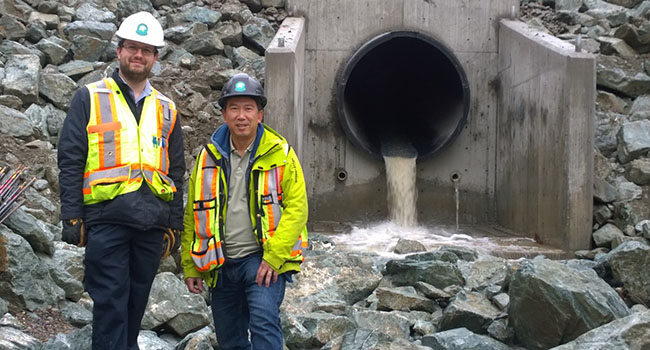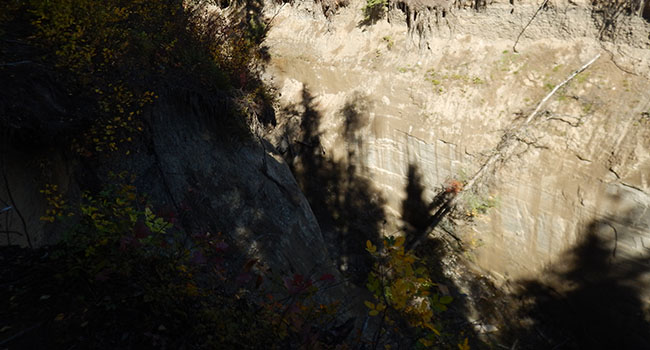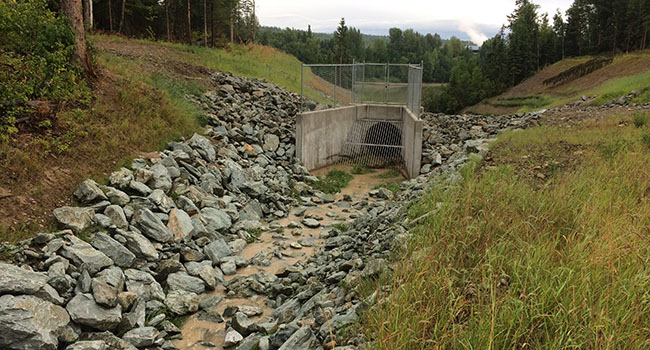
Lee Peltz, P.Eng. & Bill Cheung, P.Eng. (now retired) at the creek now flowing through their piping solution.
Did you know that McElhanney’s Prince George branch in BC specializes in the fields of geotechnical, hydrotechnical, environmental, and municipal engineering? They recently completed a project for the City of Prince George which showcased their range of civil engineering expertise.
The project focused on an unnamed creek which collects residential storm water and discharges to the Fraser River in an area of highly erodible soils. Over the years, erosion created nearly 20m tall sheer cliffs that run along a pedestrian trail behind a subdivision, posing a significant public safety risk. The community was worried that the cliffs could fall onto pedestrians and nearby residences should the erosion continue.
In addition to the public safety risk, this erosion resulted in approx. 1,000 cubic meters of soil entering the Fraser River every year. The additional sediment flowing into the river has impacted fish and wildlife habitats throughout the river’s ecosystem. The city therefore recognized that the environmental and safety problem required a highly effective geotechnical and municipal engineering solution.
To that end, the City of Prince George retained McElhanney’s expert geotechnical engineers to design a method of preventing further erosion and to adjust the existing slopes so that they would be geotechnically safe and safe for the public. McElhanney’s structural and environmental surveying team determined that piping the creek through the area of sensitive soils would be the most effective solution. Our Hydrotechnical team helped to design a double-walled, 1680mm-diameter HDPE pipe, with custom inlet and outlet structures, along with a rip-rap lined channel from the outlet of the river. They also designed the maintenance access road over the pipe to double as an emergency spillway in the event the culvert becomes blocked or otherwise unable to carry the flow.
The team then designed the cliffs to be cut back to safe slopes and be vegetated to minimize future erosion. Construction was completed in early 2017 and there has been no evidence of continued erosion through the project area as a result.

Before: The 20m tall sheer cliffs that have resulted due to erosion

After: Safer and environmentally sound creek for the community